 |
Секция
|
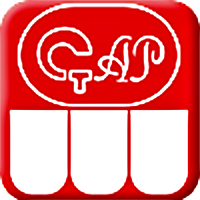
|
||
|
| ||||||||||||||||||||||||||||||||||
The 1-st Russian-European Congress of Paediatric Dentistry.September 21, 2010, MoscowDear Colleagues! In the framework of the 28-th Moscow International Dental Forum, September 21, 2010 will be the 1-st Russian-European Congress of Paediatric Dentistry. Congress is supported by the European Academy of Paediatric Dentistry (EAPD). The Congress will bring together leading experts of the European Academy of Paediatric Dentistry from Greece, Britain, Ireland, Germany and Russia. On behalf of the Organizing Committee and the Consul of Russia in the EAPD Prof. Kiselnikova L.P., invite you to participate in the 1-st Russian-European Congress of Paediatric Dentistry.
Organizing Committee
Congress program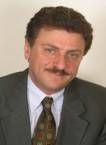
Dr Nick A. Lygidakis Dental defects of eruption and exfoliation (aetiology, diagnosis, therapy)Eruption and exfoliation dental defects result from the action of various aetiological factors during the eruption stage of the dental development. These might be environmental (systematic or local) and genetic. Early differential and final diagnosis and determination of the aetiological factors are crucial management steps, since successful treatment depends very much on the verification of the aetiology and the proper timing of the intervention. Paediatric dental, orthodontic and surgical approach is usually needed in order to have a satisfactory treatment outcome. The treatment options and protocols in cases of early and delayed eruption, ankylosis and early exfoliation will be presented and discussed with illustrative cases of correct and incorrect approach. Treatment of developmental enamel defectsThe whole variety of the enamel defects may be attributed to local, systematic and genetic aetiological factors. The clinical features are similar, although in the local aetiology defects single teeth are involved, whereas in those of systematic aetiology all the teeth developed during the time of aetiological factor action are affected (chronological defect). The later includes a clinical entity termed Molar-Incisor-Hypomineralisation that has been of great concern to the clinicians the last few years, as its prevalence has been recently shown to be usually high, 10-20%, in the child population. The defect is clinically presented as demarcated enamel opacities of different colour in the affected permanent teeth that can occasionally undergo post-eruptive breakdown due to soft and porous enamel, resulting this way to atypical cavities or even to complete coronal distortion. For these reasons the defect reveals serious clinical management problems that require complex and long lasting treatment approach. The treatment modalities for this defect regarding preventive advice and approach, restorative options for molars and incisors, adhesive properties of the defective enamel and possible extractions and orthodontic follow-up, will be presented and discussed together with illustrative cases of correct and incorrect approach.
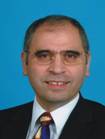
Professor Jack Toumba Fluorides for the prevention of dental caries in clinical practice.In many countries the distribution of dental caries has become "bimodal", with 80% of the disease present in only 20% of the population. Consequently, there has been a shift in the emphasis for providing preventive advice from the general population to targeting those who are high "caries-risk". The mainstay of preventive measures are the judicious use of fluoride, plaque control, fissure sealants and sensible dietary advice. Fluoride has a number of mechanisms of action. Originally it was thought that the incorporation of large amounts of fluoride into enamel were responsible for the reduction of enamel solubility. However, it is the activity of the fluoride ion in the oral fluid that is of most importance in reducing the solubility of the enamel rather than a high content of fluoride in enamel. This is now the most widely accepted view of the role of fluoride in the prevention of dental caries. There are numerous dental products available to provide fluoride for the prevention of dental caries. Fluoride can be given systemically: in water, fluoride supplements, salt and in milk; or topically: using toothpastes, gels, mouthrinses, and varnishes. In addition there are a vast number of dental materials that can release fluoride. Each patient will require an individual fluoride regime depending on their caries-risk status. Recently, there has been an increase in dental fluorosis in western countries. Dental practitioners should be aware of the signs and syptoms of fluoride toxicity and its management, and be able to give clear and concise instructions and advice to their patients when prescribing fluoride products for the prevention of dental caries. The concentration, amount and frequency of brushing of fluoride in toothpastes as well as the clinical efficacy of low fluoride dentifrices are relevant issues. The salivary retention and clearance of fluoride from dentifrices and other fluoride agents are important topics. Current clinical recommendations for the use of fluoride by small children will be reviewed. Slow-release fluoride devices for the prevention of caries in children.The latest fluoride research is investigating the use of slow-release devices for the long term intra-oral provision of fluoride. A double blind clinical trial over a period of 2 years involving 174 children aged 8yrs living in an inner city area of Leeds using fluoride slow-releasing glass devices showed 67% fewer new carious teeth and 76% fewer new carious surfaces, and are therefore, effective in preventing caries in children. There were 55% fewer new occlusal fissure carious cavities showing that occlusal surfaces were also protected by the fluoride released from the devices. The fluoride devices release low levels of fluoride for at least two years and have great potential for use in preventing dental caries in high "caries-risk" groups and irregular dental attenders.

Dr Paddy Fleming Dental treatment of the medically compromised childThe provision of dental treatment for children with significant systemic disease may be important for their general health. Issues concerning dental treatment of medically compromised children will be discussed with a focus on the dental management of children with congenital heart disease and of children with cancer. Infant Oral HealthIt is recommended that a child's first dental visit should take place before his or her first birthday. This allows the paediatric dentist give early preventive dental advice to the infant's parent/s. The examination of an infant's mouth and what you may see will be discussed. Oral lesions that occur in infants and young children will also be described and their management will be discussed.
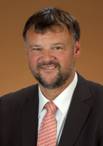
Prof. Dr. Norbert Kremer Restorative materials in the primary dentition.Despite an overall caries decline in children, still 50-60% of carious deciduous teeth of 6-year-olds remain untreated, in 3-year-olds 13%. In Germany there is an increasing number of poly caries patients with insufficiently treated deciduous teeth. Therefore, early treatment is fundamental. The judgement and indication of restorative materials can be summarized as follows: Glass ionomer cements (GIS) reveal easy handling and high fluoride release. This makes them attractive especially for Class I cavities in uncooperative children. Low flexural strength causes high fracture rates in Class II cavities. Further developments (high viscous and resin-modified GIC) have improved handling characteristics, however, conventional non-resin-modified GIC are still prone to fracture. Compomers exhibit a clear potential as alternative to amalgam. Long-term results are good even in stress-bearing areas. The compliance of the child should last for adhesive application at least. Resin composites are still the most time-consuming alternative. Following a correct application protocol, resin composites behave similar to compomers. Therefore, the effort has to be judged individually. Finally, especially in severely decayed teeth and after endodontic treatment, stainless steel crowns should be taken into account as the last and appropriate alternative to direct restorations. Endodontic techniques in primary teeth.In the last years a change in the understanding of the biologic possibilities of the pulp in the primary dentition has taken place. Due to the opportunity of tissue repair indirect pulp treatment can be acceptable procedure for reversible pulp inflammation. In comparison to the second dentition direct pulp capping is less satisfactory in deciduous teeth. In the cases of pulp exposure iatrogenic or due to caries excavation the primary teeth should be treated by pulpotomy. Formocresol had been the most popular material to cover the wound tissue. Due to the discussed side effects other pulpotomy techniques are established today. Ferric sulfate in combination with zinc oxide eugenol has been proposed as a substitute. Better results were reported with MTA (Mineral Trioxide Aggregate). The rate of internal root resorption is lower after the application of MTA on the pulp wound. In contrast to the formocresol technique all alternatives assume an unaffected root pulp in the primary dentition. In these cases pulpectomy or extraction of the tjjth is the treatment of choice. To sum up the evidience of this literature review, longer follow-up and more clinical studies are needed to confirm the results of endodontic treatment in the first dentition.

Prof. Larisa Kiselnikova Present-day vision on etiology and treatment of Early Childhood Caries.For the last years there were increase of caries in early childhood all over the world. Early childhood caries is infectious disease. Leading hand in its origin belongs to streptococcic microflora, especially to Streptoccocus Mutans. Characteristics of pathogenesis of early childhood caries, problems of prediction and early diagnostics will be reflected in lecture. Methods of treatment and prophylaxis of this pathology, features of local etiopathogenetic therapy application (antimicrobial remedy, probiotics, remineralization remedy, fluorides) will be covered. Treatment tactics, methods of carious cavities preparation, filling materials, protective crowns use.
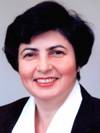
Prof. Elena Maslak Analysis of children dental care in Volgograd Region and development prospects of dental care.In previous decades paediatric dentistry service was in crisis due to difficult socioeconomic reforms in country. Basic problems: lack of cadres, system breakdown of planned oral cavity sanation of organized children population, insufficient material and technical equipment etc. Most of parents (90%) prefer state dental institutions for their children, therefore development of privet dental clinics and rooms network cannot solve a problem of children dental care. The ways out of crisis and development prospects of children dental care were determined. Licensing and re-equipment of school dental rooms were realized in Volgograd and Volgograd Region. Mobile dental room for oral cavity sanation to children of distant schools and kindergartens was organized. Positions on prophylaxis and treatment by modern technics and materials were brought in obligatory medical insurance program. Carried out reforms improved basic children dental care rates.
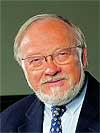
Prof. Hinz The foreground role of children dentists in early prevention of malocclusions provided by bad habits and myofunctional disorders.Prevention, early diagnosis and early treatment should become a priority direction for future medical practice. Therefore, malocclusions are to be detected at the very early age as they are often evident immediately after birth or as a result of incorrect feeding pattern within the first year of a child's life. These malocclusion is often the result of the different bad oral habits and dysfunction that have a negative effect on the development of teeth and jaws as they disrupt the balance between peri-oral and intraoral muscles and also lead to incorrect pattern of breathing, sucking, chewing, swallowing and speaking; all being vital life functions. Primary preventative measures should include informing and educating parents, podiatrists and other early childhood medical personnel about guidelines to artificial feeding and recommended models of dummies which does not interfere with the correct jaw, teeth and facial development. Parents need to be educated on preventative therapy of bad oral habits and dysfunction as well as early treatment of existing malocclusion in order to sustain normal development in primary dentition. Prophylaxis new dummy models and a new type of oral screen called 'STOPY' are the latest developments in this domain having a preventative shape and designed for children from 2 years of age represent two first steps of early prevention accompanied by an earlier version of the oral screen appliance for children from 4 to 6 years old. Timely use of these appliances targeted at preventative treatment is only possible when podiatrists, children dentists and orthodontists work closely together on this problem. Podiatrists as well as children dentists play a vital role here as they are the very first specialists to see early signs of those problems and can educate parents and refer them to a dental specialist or suggest to the parents some early treatment appliance independently. The scope of the proposed presentation includes as statistic as well as clinical results of a joint research of podiatrists, children dentists, and orthodontists in Germany was dedicated to the habits, dysfunctions and sleep disorders. There are some other questions are going to be presented:
Speakers
Dr Nick A. Lygidakis, GreeceDr Nick A. Lygidakis is working in Athens where he runs a private practice limited to Paediatric Dentistry, Oral Surgery and Orthodontics. Following a 10 years career in the Dept of Paediatric Dentistry in Athens University, since 2000 he organized and developed the first in Greece Community Dental Center for Children and an attached Hospital Unit for General Anaesthesia, where he still works as Consultant Paediatric Dentist. He is also Honorary Reader (Associate Professor) in Paediatric Dentistry in the Leeds University, UK, where he teaches in the postgraduate PD program. Following his qualification in Dentistry from the University of Athens in 1980 and 2 years postgraduate training in Paediatric Dentistry he was further educated for 3 years in England, in the Universities of Oxford and London, being a State Scholar. He holds a Master of Science in Medicine degree (Genetics), a Master of Science in Dentistry degree (Child Dental Health), and a PhD degree (Oral-Facial Genetics). He is at present, President of the European Academy of Paediatric Dentistry. In Greece he is President of the Hellenic Society of Paediatric Dentistry. Being for many years actively involved with the Primary Dental Health Care, he has been member and Chairman of many Committees of the Ministry of Health and the Hellenic Dental Association concerning the organization of the Hellenic Dental Health Services. He has published more than 50 papers in peer reviewed scientific journals and over 130 abstracts in Hellenic and International Congresses. His research and clinical interests are in the fields of dental anomalies, special needs patients treated under general anaesthesia, trauma, fissure sealants and epidemiology and he is frequently an invited Lecturer at home and aboard on these subjects. For his scientific and professional achievements he has been awarded with various distinctions nationally and internationally, including Fellowship of the Royal Society of Medicine in UK and Membership of the American Association for the Advancement of Science and the New York Academy of Science.

Professor Jack Toumba, U.K.Professor Jack Toumba obtained his BSc (Hons) in biochemistry and physiology from Leeds University in 1976 and his MSc degree in steroid endocrinology in 1977. He then graduated in Dentistry with BChD from Leeds University in 1984. For eleven years was a Senior Dental Officer in Paediatric Dentistry IN THE Community Health System (NHS) in England. He obtained his FDSRCS from the Royal College of Surgeons of England and his PhD from Leeds University on the topic of fluoride slow-releasing devices. He was awarded a personal Professorship in Paediatric and Preventive Dentistry in the University of Leeds in October 2004. Prof Toumba is currently Board member in the European Academy of Paediatric Dentistry and Associate Editor of the Academy's official Journal, the European Archives of Paediatric Dentistry. Prof Toumba has published over 60 research papers/books/articles in international journals and more than 100 abstracts in International Congresses. For his research he has obtained grants valuing almost ?2.5 million. Jack Toumba is co-author of the books 'Restorative Techniques in Paediatric Dentistry' and 'Dental Traumatology'. He is an internationally respected scientist and clinician and is invited all over the world to give lectures and courses on Paediatric Dentistry. His particular expertise is in prevention of dental caries, slow-release fluoride devices and the use of fluorides.

Dr Paddy Fleming, Ireland.Dr Fleming graduated from the Dental School and Hospital in Dublin, Ireland, in 1977 and completed the Master's programme in Paediatric Dentistry at the University of Minnesota, USA, in 1987. He undertook consultant paediatric hospital training in Ireland, jointly between Dublin and Belfast, and was appointed Consultant and Senior Lecturer in Paediatric Dentistry at Our Lady's Children's Hospital, Dublin and at the Dublin Dental School and Hospital in 1993. Dr Fleming is recent past chairman and current member of the Advisory Committee in Paediatric Dentistry of the Irish Committee for Specialist Training in Dentistry and is an examiner for the Fellowship in Paediatric Dentistry of the Royal College of Surgeons in Ireland. He is the current Secretary of the European Academy of Paediatric Dentistry. His interests are in the provision of dental care for medically compromised children and he has published and lectured at home and abroad on this topic.

Prof. Dr. Norbert Kremer, Germany.Prof. Dr. Norbert Kremer graduated from the Dental School at the University of Erlangen, Germany, in 1986. He obtained his PhD from the University of Erlangen in 1997. In 2000 he was elected for a period of four years as President of the German Society of Paediatric Dentistry. Between 2006 and 2009 he was the head of the Department of Paediatric Dentistry in Dresden. In 2009 he was appointed to the director of the Policlinic of Paediatric Dentistry at the University of Gie?en. Prof. Kremer is currently Board member in the European Academy of Paediatric Dentistry (President elect) and Editor of the German Journal of Paediatric Dentistry (Oralprophylaxe and Kinderzahnheilkunde). He is in the Editorial Board of several international journals (Am J Dent, J Dent, Up2date, Quintessenz). Prof. Kremer has published over 150 research papers/books/articles (cum IF: 74; H-factor: 20). His expertise is in dental materials, dental public health and controlled clinical studies.

Professor Kiselnikova Larisa, Russia.Kiselnikova Larisa graduated Tver State Medical Academy. Worked by a paediatric dentist, head of the Paediatric Dental Doctor Hospital number 4 in the city of Yekaterinburg. From 1980 to 1998 served as assistant and Head of the Department of Paediatric Dentistry Ural State Medical Academy. From 1998 to 2005 served as the Head of the Department of Paediatric Dentistry, the Rector of the St. Petersburg Institute of Dentistry. Since 2006 and currently works in MSUMD as a professor, and since May 2006 as the Head of the Department of Paediatric Dentistry. In 1990 she has defended her Ph.D. thesis "Caries first permanent molars in children." In 1996 she defended her doctoral dissertation on "Fissure caries: clinical, diagnostic, treatment and prevention". In 1998, she was awarded of the academic title of professor. Kiselnikova LP author of 193 scientific papers, 13 patents in pediatric dentistry and prevention of dental diseases. She is editor of the first national guidelines for paediatric dentistry. Research interests: prevention of dental diseases, cariology, paediatric dentistry. Kiselnikova LP is a member of the editorial board of four scientific journals recommended by the Higher Attestation Committee of Russia and a foreign magazine (Ukraine). She is an expert on certification of hygiene facilities. Kiselnikova LP is a Consul of Russia in the European Academy of Paediatric Dentistry. Kiselnikova LP is the Executive Secretary of the Dental Association of Russia since 2006.

Prof. Elena Maslak, Russia.Elena Maslak is professor of the Department of Paediatric Dentistry of Volgograd State Medical University. In 1975 she has graduated from Dentistry Faculty of Volgograd State Medical University, in 1978 - clinical residency on Therapeutic Dentistry VSMU, in 1981 - post-graduate study on Paediatric Dentistry Russian Medical Academy of Postgraduate Education, Moscow. From 1981 till 1989 she was junior member of teaching staff, than from 1989 till 1999 - associate professor, from 1999 - professor of the Department of Paediatric Dentistry of VSMU. Most of research activities are dedicated to the problems of paediatric dentistry (prophylaxis and treatment of caries, periodontal diseases, organization of children dental care, school dentistry) and medical sociology (educational programs, influence of dental diseases on quality of life, social role of private dentistry). In 1981 defended Ph.D. dissertation "Significance of response ratio of oral cavity sanation in prophylaxis of odontogenic nidus in schoolboys", in 1997 - doctoral dissertation "Planning, monitoring and и examination of children dental care". She developed new line in organization of children dental care, based on original information system "Paediatric Dentistry". Elena Maslak has 232 scientific publications, including 28 - training appliances, 3 manuals and monograph, she is scientific editor and one of the authors of National guidance "Paediatric Therapeutic Dentistry". Repeatedly delivered lectures on regional, All-Russian and international scientific practical conferences, congress in Russia, Great Britain, Germany, USA, Finland, Italy. 17 Ph.D. and one doctoral dissertation were defended under her direction. Doctor of higher category, member of regional ethic committee, vice-chairman of Dissertational committee on medical sociology, member of Dissertational committee on surgery and dentistry, member of Academic committee of dentistry faculty of VSMU, member of editorial council of scientific practical journals "DENTAL FORUM" and "Russian Dentistry", expert of Federal system on inspectorate on public health service, principal examiner on paediatric dentistry committee on public health service in Volgograd and its region.

Prof. Hinz, Germany.1953 State examination at Humbold University, Berlin1955 Doctorate about artificial tooth shapes 1956 acknowledgment as a specialized dentist for orthodontics 1957 settlement as a dentist in Doberlug-Kirchhain 1960 removal to West Germany 1960 settlement as an orthodontist in Herne 1967 foundation of the Dr. Hinz laboratory 1974 foundation of the dental specialized publishing house "Zahn?rztlicher Fach-Verlag" 1977 foundation of the training center for dentists 1982 foundation of the Dr. Hinz Dental sales department 1985 assistant professor at Witten-Herdecke University 1989 nomination as chair owner and professor 2000 given emeritus status, but still active at the university 2002 foundation of HARANNI ACADEMY and CLINIC 2008 Golden-acus-award from German Dentist Chamber 2010 Appolonia-award for prevention Basic research areas: prevention of dentoalveolar anomalies, correction of dysfunctions and harmful habits, bruxism, Somnology, prevention of pathologic abrasion.
Exhibition Center "CROCUS EXPO"VENUE:Moscow, Crocus Expo exhibition center, Pavilion 2, Halls 5 and 8 MYAKININO METRO STATION IN CROSUS EXPO MAP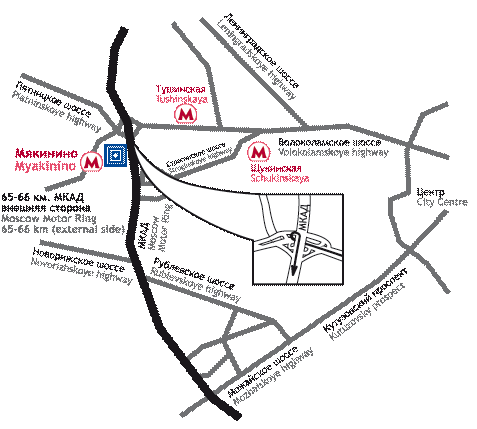
Contact:Ludmila Drobotko Dmitry Veselov |
| © Стоматологическая Ассоциация России | Секция "Стоматология детского возраста", 2010-2022 |